The best ski resorts in Japan
Looking to make this season ridiculously epic? Head for Japan with its dreamy ski resorts, onsens, insane food, and, of course, Japow! Discover where to hit first with Dope Mag’s guide to the best ski resorts in the country.
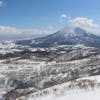
Japan has reached legendary status for skiing and snowboarding. With its onsens, amazing food, friendly locals, and insane riding conditions, nowhere else can quite compete. And, of course, nowhere else on the planet offers Japow: Japan’s feather-light, dream-worthy dry powder. Float through it once and you’ll be hooked forever. You can thank Puki Yuki (the snow goddess of Japan).
But with over 500 ski resorts to choose from across Hokkaido, the northern island, and Honshu, the main island, where should you aim first? Don’t worry – Dope Mag’s got you with another in-depth guide. So, discover our exclusive look at the best ski resorts in Japan – and prepare to leave with experiences unlike anywhere else.
Oh, and you’re gonna need reliable, stylish gear to see you through that eye-high Japow and dreamy tree runs, right? Then browse our latest collection of ski bibs and ski jackets – and get booking!
The top 10 ski resorts in Japan
Niseko, Hokkaido
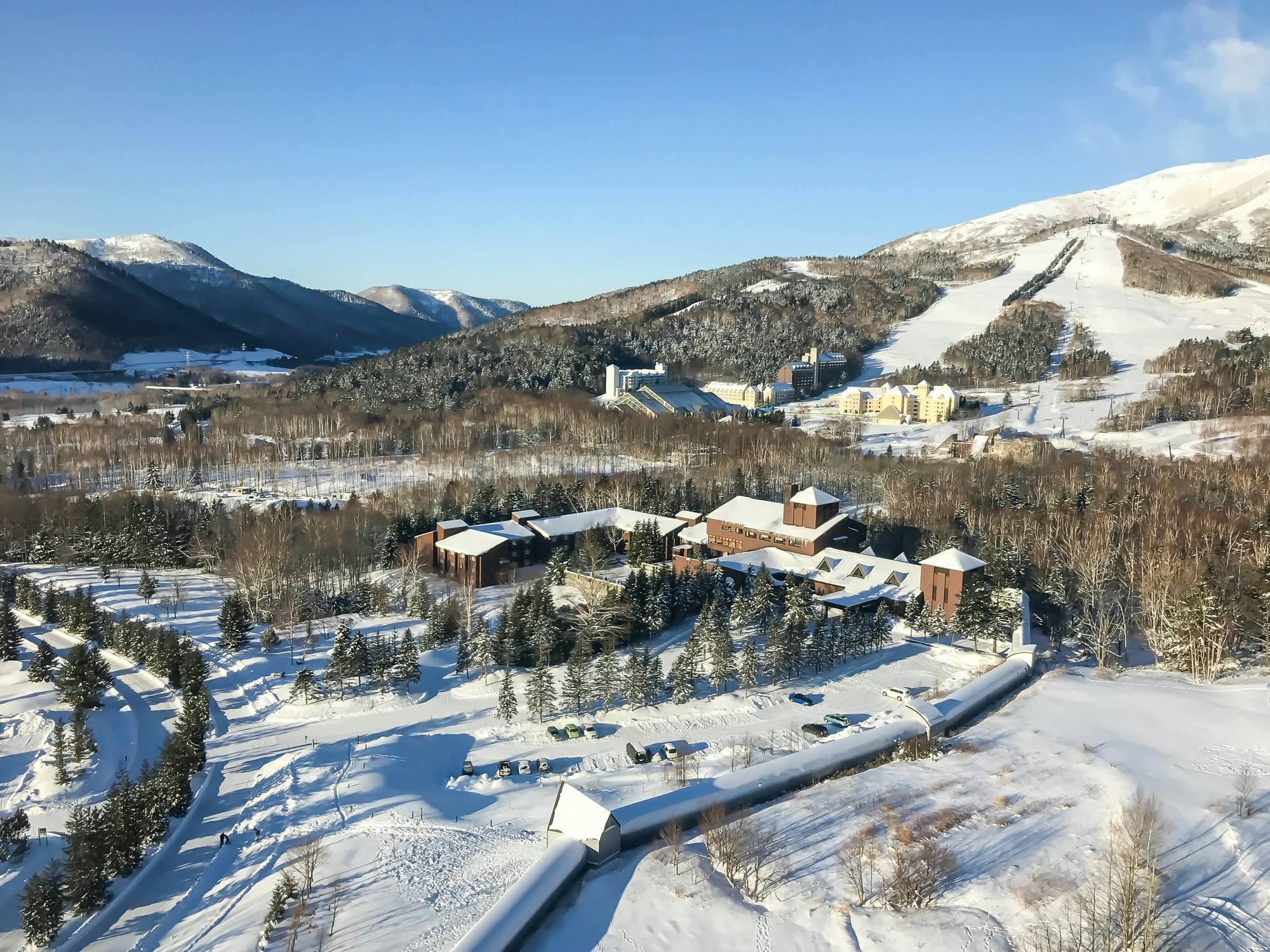
- 2,000+ acres
- 76 trails
- 33 lifts
- 2,952 feet of vertical drop
- 49+ feet of snow per year
- All Mountain, Mountain Collective Pass, IKON Pass
If somewhere is known as the powder capital of the world, we’re going. And we guess you are, too, right? After all, who can blame any of us when Niseko boasts over 15 meters or 49 feet of Japow per year!? Nope, that’s not a typo. That’s all thanks to a cold front traveling from Siberia across the Sea of Japan, and boom – right into Hokkaido. So that means chin-deep Japow-filled tree runs and floating through untracked backcountry trails. Bliss. However, Niseko offers plenty for riders who prefer long, winding groomers and newbies honing their skills.
Okay, so when we say ‘Niseko’, we’re actually talking about Niseko United. It’s made up of four interlinked ski resorts on Mt. Annupuri: Grand Hirafu, Hanazono, Niseko Village, and Annupuri. Niseko Hanazono Resort is rad for steep ‘n’ deep lines in the backcountry. Niseko Grand Hirafu Resort offers the world’s best-ever night skiing (prove us wrong!). Niseko Village Resort provides amazing ski-in, ski-out accommodation, gentle beginner terrain, and Mizuno no Sawa, an off-piste area highly rated by locals (but rarely open because of the high avalanche risk). And Niseko Annupuri Resort? Shred super fun groomers alongside the world-famous Annupuri pow bowls. You don’t have to choose between them, though. Instead, buy an All Mountain lift ticket – or bring your IKON or Mountain Collective Pass – and access all four via the upper ski lifts or buses at each area’s base.
Because it’s so popular with international shredders, Niseko caters to English speakers better than any other Japanese resort. Grand Hirafu is especially good for nights out, with an insane array of bars and places to eat, including Michelin-starred restaurants! You’ve just got to head to Bar Gyu+, a speakeasy-style bar with a red fridge door entrance, award-winning Hokkaido whiskey, and sublimely crafted cocktails. However, with Niseko’s popularity comes the price tag. So, prepare yourself that this is one of the most expensive places to ride in Japan. It is 100% worth it, though.
Top tip: Night shredding! We mentioned it briefly above, but it’s pure magic in Niseko as you charge through floodlit, fresh pow and mystical fog underneath the stars. Once you’ve had your fix, stop by Steak Rosso Rosso for tender Kobe beef. Anyone else’s mouth watering?
Shiga Kogen, Nagano
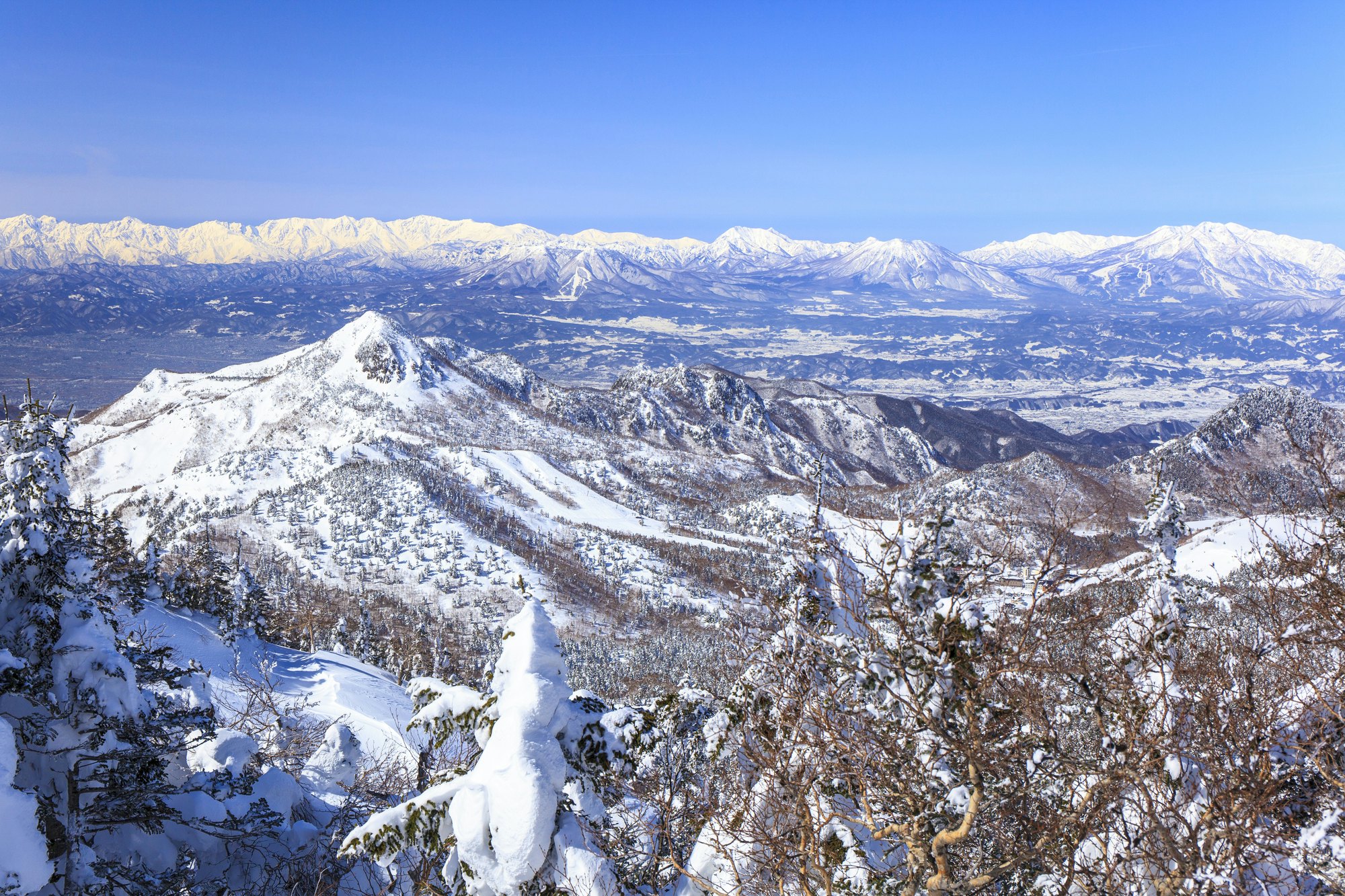
- 4,097 acres
- 179 trails
- 55 lifts
- 3,215 feet of vertical drop
- 36 feet of snow per year
- Resort Pass
How about mixing shredding with Sakura? Shiga Kogen makes that totally possible thanks to its amazingly lengthy season. Yep, turn up for opening weekend in mid-November and stay until cherry blossom appears at the end of May. Dreamy, right?
Shiga Kogen is also part of Japan’s largest connected ski area. Buy one lift ticket and access 19 different ski areas that’ll take you two full days to cover! The terrain is split into two areas – the southern area (with a 2,305-meter summit) and the northern area (topping out at 2,000 meters). Together, there’s something for every rider and all abilities, including winding, long cruisers, beginner areas, and pow bowls. Intermediates, in particular, will find their groove. In fact, we think it’s apt to say Shiga Kogen has Japan’s best intermediate slopes. Plus, you’ll drool at the off-piste available in marked areas. Our favorite is Expert’s Course in Yakebitaiyamac, with a 39-degree gradient. If venturing into the unmarked territories, take a guide. This is especially true if you’re attempting the backcountry trip from Shiga Kogen to Manza Onsen, arguably Japan’s most famous route. And don’t take any risks – the resort staff can take your pass off you if you’re caught being somewhere you shouldn’t.
Shiga Kogen gives you the chance to bond with other riders, too. That’s all thanks to its selection of ski-in, ski-out, traditional Japanese ryokan guesthouses. Here, you can eat, drink, and chat with other guests. Most riders chill in the guesthouses come evening, as Shiga Kogen has no central village. But, what’s better than sipping sake and sharing stories of the day with your new crew?
Top tip: Visit Jigokundani Snow Monkey Park ASAP! Watch wild snow monkeys bathe and chill out in the local hot springs. Honestly, it’s a sight worth seeing (and filming to show your friends back home!).
Rusutsu, Hokkaido
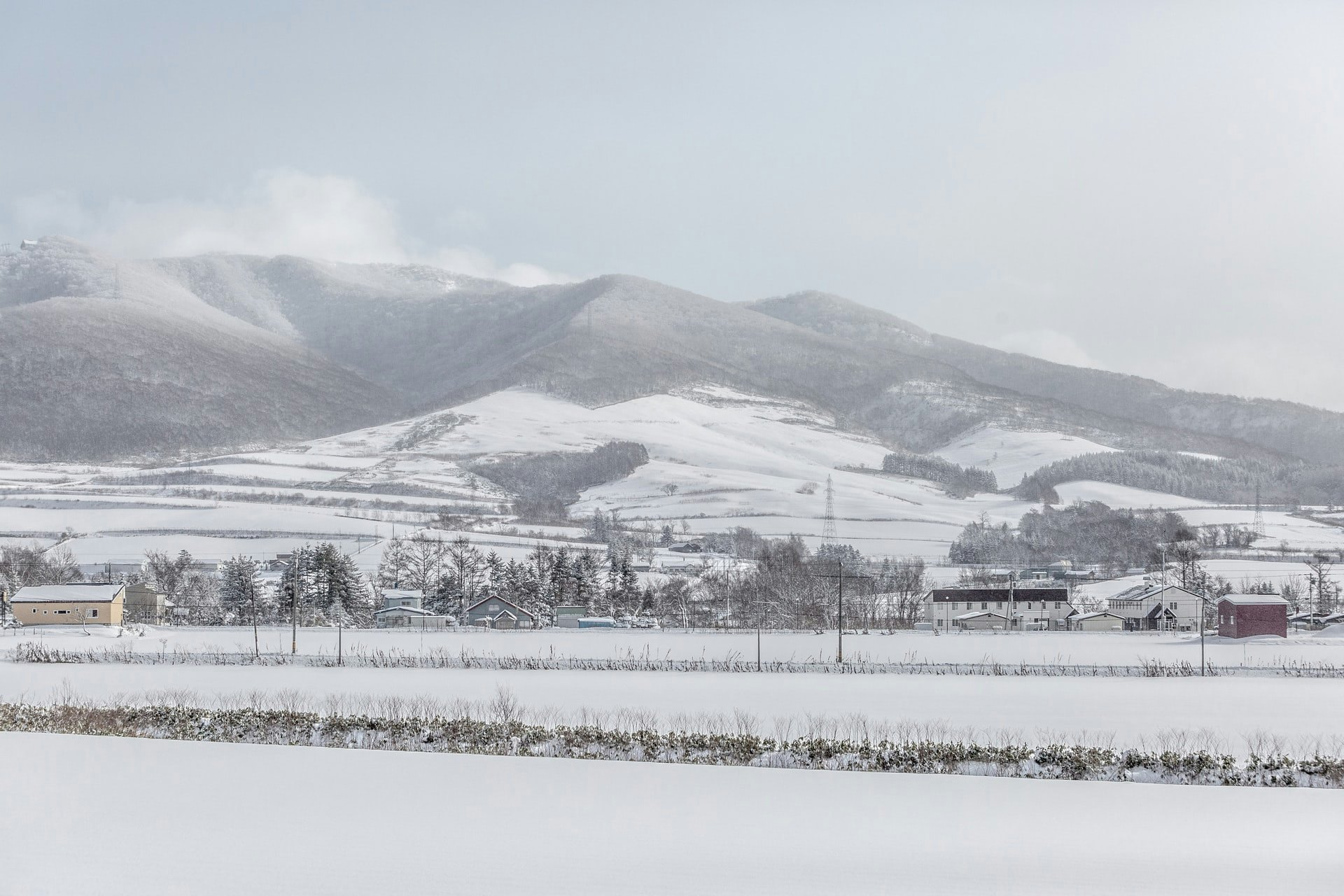
- 1,378 acres
- 37 trails
- 18 lifts
- 1,948 feet of vertical drop
- 45 feet of snow per year
- Epic Pass
With its supreme pow reputation, it’s little surprise Niseko can get crowded. So, if you want those freshies to yourself (and who doesn’t?), set Rusutsu in your sights. And by freshies, we mean freshies – Rusutsu has an annual snowfall of over 45 feet/13 meters! Yew! So, prep for things to get deep! We bet it’ll take one turn before you get why they call it ‘Japow Nirvana’. And the pow is so dry, you’ll blast through it with zero resistance.
Rusutsu is only around 30 minutes by car from Niseko. So it makes an epic day trip, especially if it’s super windy in Niseko. That’s all down to Mt Yotei sheltering Rusutsu, so it experiences less battering from those northwest winds and fewer lift closures. However, it’s also awesome to have a longer stay. After all, beginners and intermediates will go crazy for the varied corduroy groomers across three mountains: West Mt, East Mt, and Mt Isola. And powhounds? They’ll wag their tails at all those untouched off-piste powder fields and lift-accessible tree lines, ready for the taking. Oh, and don’t forget to check out the pow-loaded gulleys, natural half-pipes, and wide-open ridgelines.
Rusutsu is a great choice if you’re all about the riding, and that’s because there’s modest nightlife and no traditional village. However, after floating through pow all day, we think you’ll be too wiped to party, anyway. Plus, you won’t want to leave Rusutsu’s luxury onsens. Our favorite? Kotobuki, an open-air onsen. You can’t beat its panoramic view and cave bath!
Top tip: Prepare for an entrance! You’ll arrive at Rusutsu and question if you’ve landed in Disneyland with a singing tree, a merry-go-round, and a few arcade machines welcoming you. We’re not making this up!
Hakuba Valley, Nagano
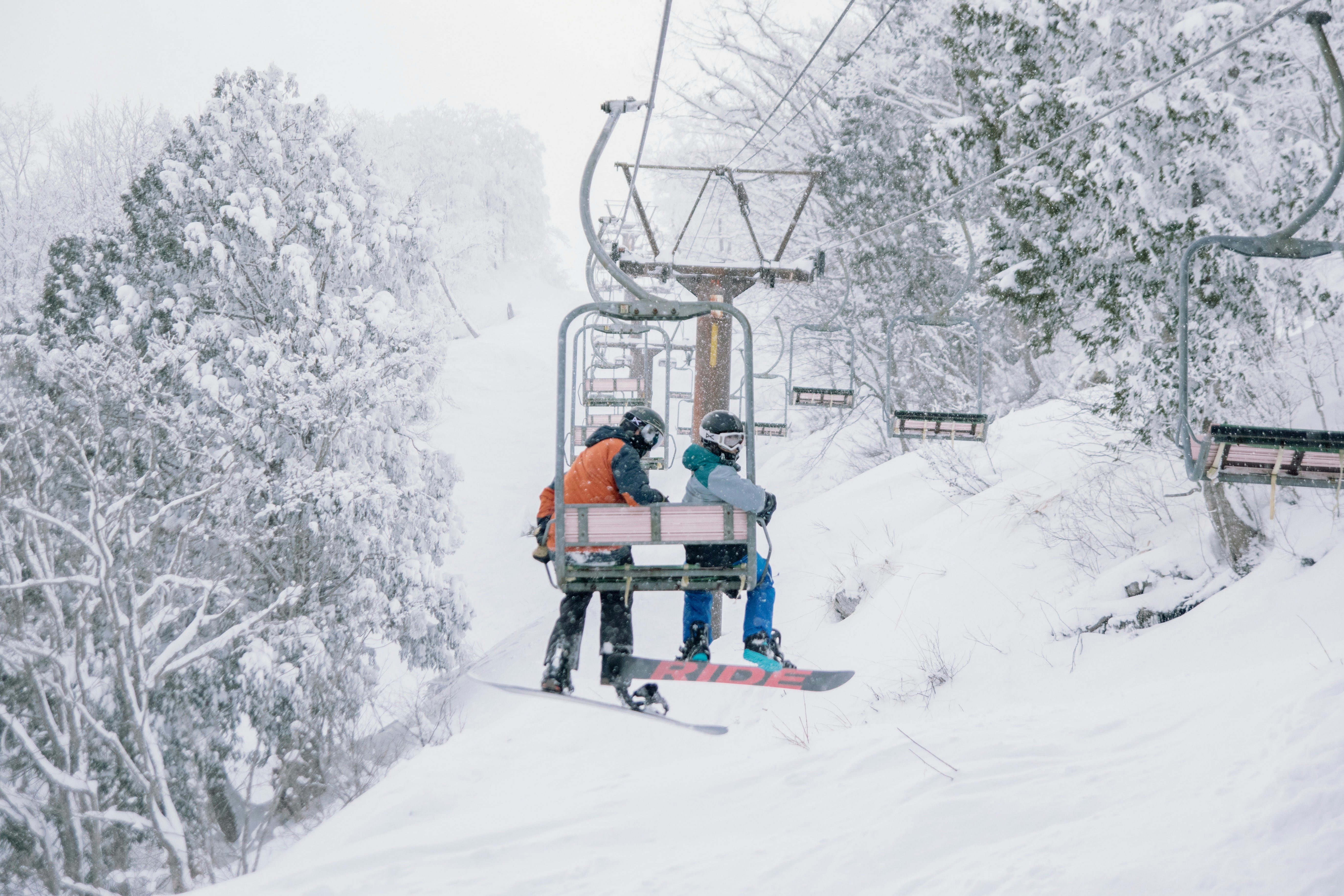
- 2,599 acres
- 200+ trails
- 133 lifts
- 3,513 feet of vertical drop
- 33 feet of snow per year
- Hakuba Valley Pass, Epic Pass
What doesn’t Hakuba Valley have? 10 different ski resorts make up this mega ski area in the Japanese Alps, which hosted the 1998 Winter Olympics.
Yep, Hakuba might seem overwhelming – being one of Japan’s largest ski areas and all. However, you can easily shuttle between the resorts to take on its varied, epic terrain that’s just as ace for beginners as seasoned pros. Oh, and you can do it all on one lift ticket: the Hakuba Valley Ticket. Or, bring your Epic Pass, which includes Hakuba. Nice! Don’t forget to check out the Cortina to Norikura backcountry run, too. A steep incline is blended with perfectly-spaced trees for one of the best runs of your life!
Happo One and the interlinked Hakuba 47 are probably the most popular resorts in Hakuba. Once done riding, head to nearby Echoland. This buzzing area is where you’ll find tons of bars and eateries. Aim for Sarugaku, an izakaya (Japanese pub), serving incredible food and delicacies, such as sashimi and local sake. And stop by Cherry Pub for a post-dinner whiskey. However, the real Japanese après-ski vibes are in the onsens. And in Hakuba, you’ll find more onsens than you can shake a ski pole at. Our top pick is definitely the open-air Pension Ringo-no Ki. Just remember to brush up on onsen etiquette before you go – most require going in your birthday suit, and don’t allow anyone with tattoos!
Top tip: Combine Hakuba with Tokyo! Yep, Tokyo is only 2.5 hours from Hakuba by bullet train or bus. So, why not mix city life with cruising, carving, ‘n’ charging through pow?
Nozawa Onsen, Nagano
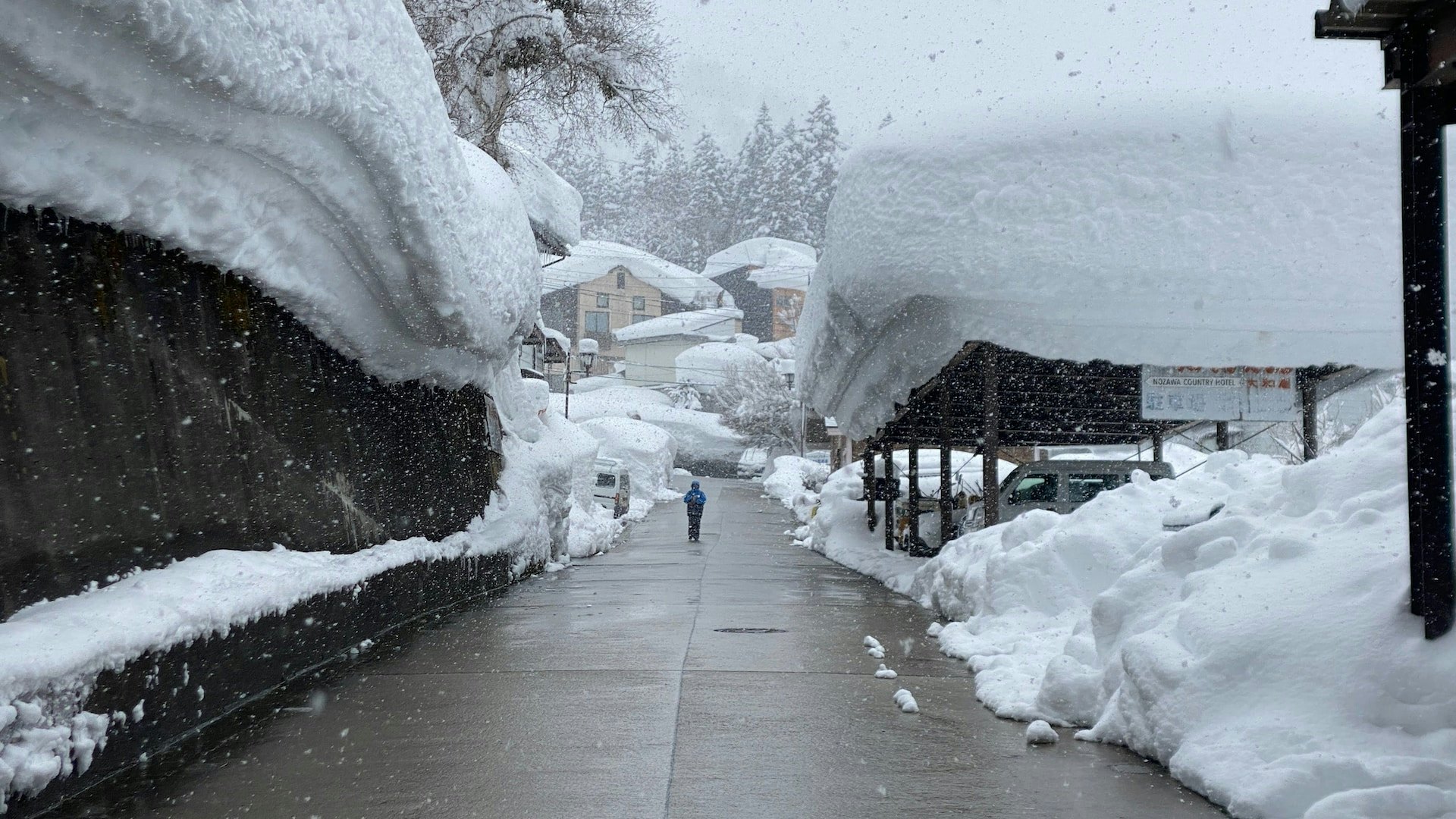
- 733.9 acres
- 36 trails
- 21 lifts
- 3,560 feet of vertical drop
- 39 feet of snow per year
- Resort Pass
You won’t really find better onsens than those in Nozawa Onsen. This former-hot-spring-town-turned-ski-resort boasts 13 free public bathhouses (sotoyu) for soaking and swapping stories after an epic day riding Nozawa’s main ski area. And up the hill, you’ll find buckets of varied terrain. We’re talking about groomers, bumps, terrain parks, a half-pipe, tree trails, and a 39-degree incline to work those legs…and make sure you earn your onsen time. Oh, and look out for Nasuki, a Nozawana cabbage on skis. It’s the ski resort’s very own mascot!
Want to swap pruning for partying? Nozawa is the place. Yep, Nozawa is one of Japan’s oldest ski resorts (opened in 1924). However, it’s also one of the best for après-ski – in Japan’s own laid-back way. That means you’ll find several bars and restaurants. Our fave is the Craft Room, a bar and taproom perfect for swapping stories while sampling Nozawana (pickled vegetables). Oh, and there are karaoke bars, of course! Hire a room at Heaven and slay your rendition of ‘Mr. Brightside’. You’ll find these dotted throughout Nozawa’s picturesque traditional village, full of narrow streets and historical buildings.
But Nozawa is also an epic choice for families and little ones. Your mini shredders can learn their Pizzas from the French Fries with English-speaking ski instructors at the ski school. Then, they can let it rip at the free-to-ride Kids Park on weekends. The Kids Park offers a bouncy castle alongside sledding and tubing. Um, we volunteer if they ever need an adult to test things out…
Top tip: Stay in a historic wood-paneled ryokan (a Japanese guesthouse) with traditional paper sliding screens and tatami mats. Most of Nozawa’s buildings date back to the Edo period (1603-1868), so who knows whose footsteps you’ll follow before blazing your own trail on the mountain?
Furano, Hokkaido
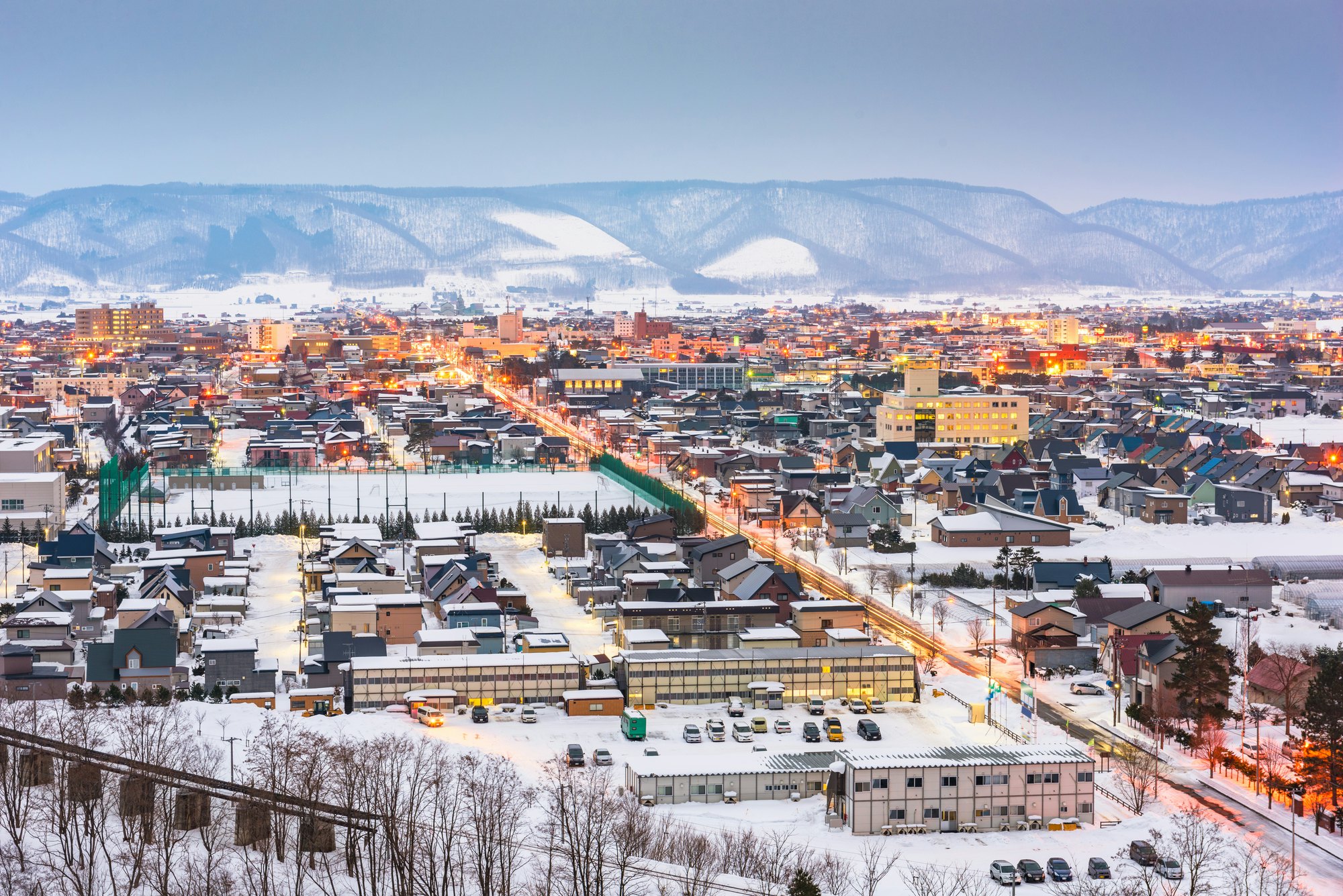
- 479 acres
- 28 trails
- 9 lifts
- 2,753 feet of vertical drop
- 29.5 feet of snow per year
- Resort Pass
Furano is simply epic. And although it’s become more popular over the years, it’s never lost its authentic charm. The riding is next-level, too. You’ll find insane snow quality (better than Niseko as it’s lighter and drier *ducks for cover*), varied terrain to suit all abilities and a decent 2,753 feet of vertical drop. And did you know Furano is famous for its bluebird days? Yep, you won’t have to worry about swapping your goggle lenses because of Japan’s typical overcast conditions.
Ski-tripping with the family? Definitely take them to Furano, as kids 12 and under can ride for free! Plus, 80% of the on-piste terrain throughout Furano’s two zones – Furano and Kitanomine – is marked as beginner and intermediate. This means there are plenty of beginner areas and mellow groomers to keep budding riders occupied. See yourself as a hard to please powhound? Furano can satisfy! Just head into the gate-accessed backcountry and experience heaven. Oh, and hire a guide when venturing into the backcountry! In fact, this tip applies to all the resorts on our list. Be careful which guide you choose, though, as plenty of ‘cowboy’ guides exist throughout Japan, so make sure you pick someone recommended or from a trusted source.
Once you’ve had an epic day in the backcountry, remember that Furano is also only four miles from Furano City. This means you can indulge in traditional Japanese cuisine throughout the multitude of restaurants. And don’t forget to check out the izakayas (Japanese pubs) and cafes throughout the City and Furano Ski Resort. Our fave is definitely Yama no Doxon (Furano Brewery) in Kitanomine. Sit on the floor as you sample snacks alongside the local brew. After something heartier? Set your sights on Shinatora – a 10-minute drive from Furano ski resort – and refuel on delicious black garlic ramen.
Top tip: Sign out at the ticket desk before exiting Furano’s backcountry gates. It’s a legal requirement. Oh, and the staff send your form to the local police. That’s because the police lead the search if you need to be rescued and issue hefty fines – especially if you require a heli. Eek! This is true for a lot of Japanese ski resorts, too. So, always read up on your resort’s off-piste rules and what you’ll need to access those areas (i.e. a form, briefings, equipment, etc).
Tomamu, Hokkaido
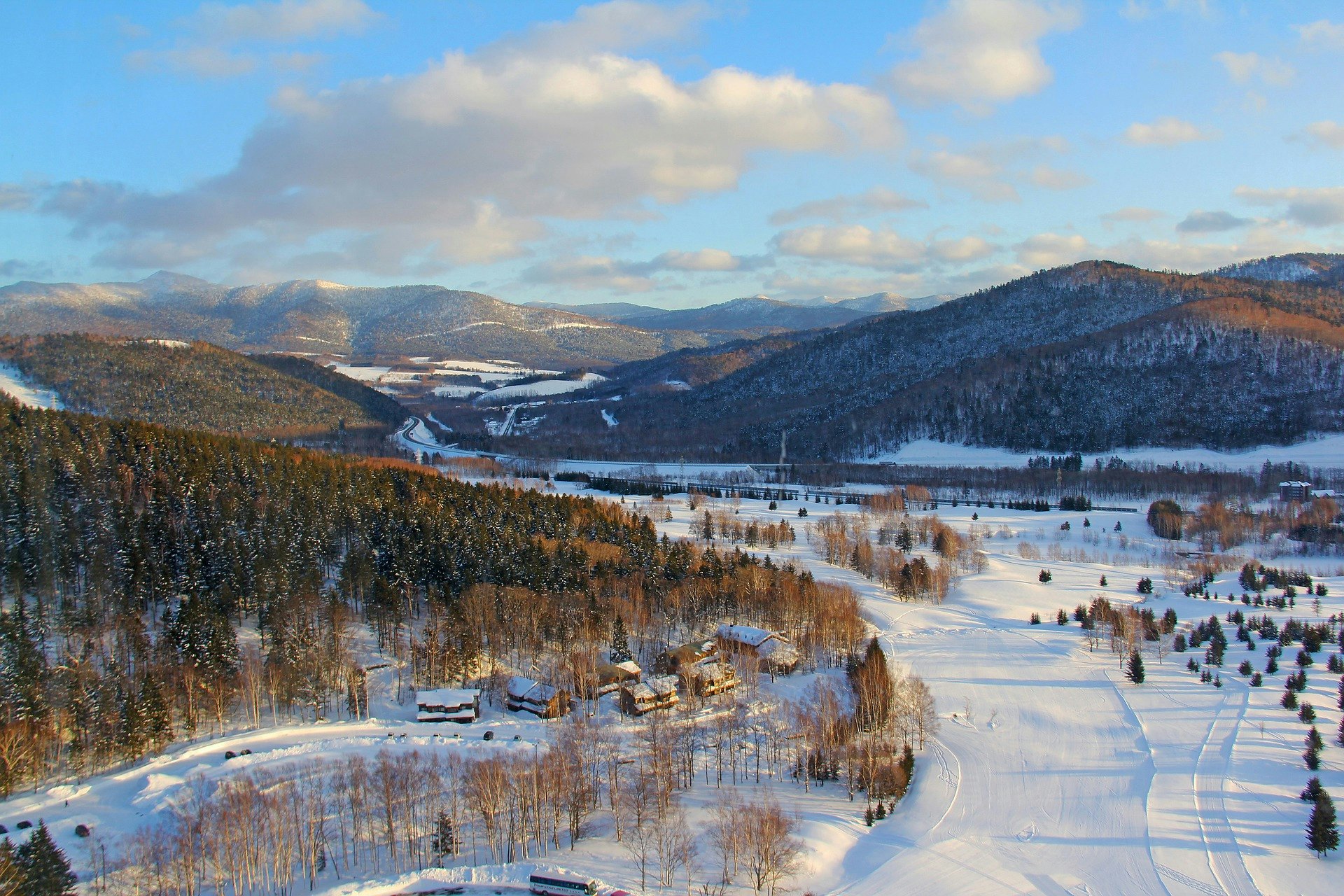
- 360 acres
- 28 trails
- 6 lifts
- 2,293 feet of vertical drop
- 25 feet of snow per year
- Resort Pass
Looking to bring the family but also want access to decent off-piste? Wondering if such a place exists? Say hello to Tomamu. Yep, this place is truly unique. Tucked in a national park, Tomamu offers awesome inbounds riding for experts alongside sidecountry and backcountry terrain, and beginner, intermediate, and advanced groomers to keep the whole crew happy. Plus, little ones can join group ski lessons in English.
Okay, Tomamu is much smaller than Niseko, with just six lifts and 28 slopes split evenly into three difficulty levels. However, it’s often way less crowded than its Hokkaido counterpart. Tomamu is also part of Hokkaido’s ‘powder belt’ (created by that cold front we mentioned earlier). So, you can experience waist-deep Japow all to yourself.
And Tomamu’s radness doesn’t end there. You’ll find an indoor wave pool, snow rafting, sledding, and an Ice Village with an ice church (where you can get hitched!) and an ice bar (where you’ll struggle to stay for five minutes!). Oh, there’s also snowmobiling, a viewing platform with hot chocolate available, and more.
Top tip: Book a snowcat tour! It’s awesome for exploring nearby fresh terrain. And speaking of ‘fresh’, prep yourself for as much untouched pow as far as the eye can see! Drooling yet?
Kiroro, Hokkaido
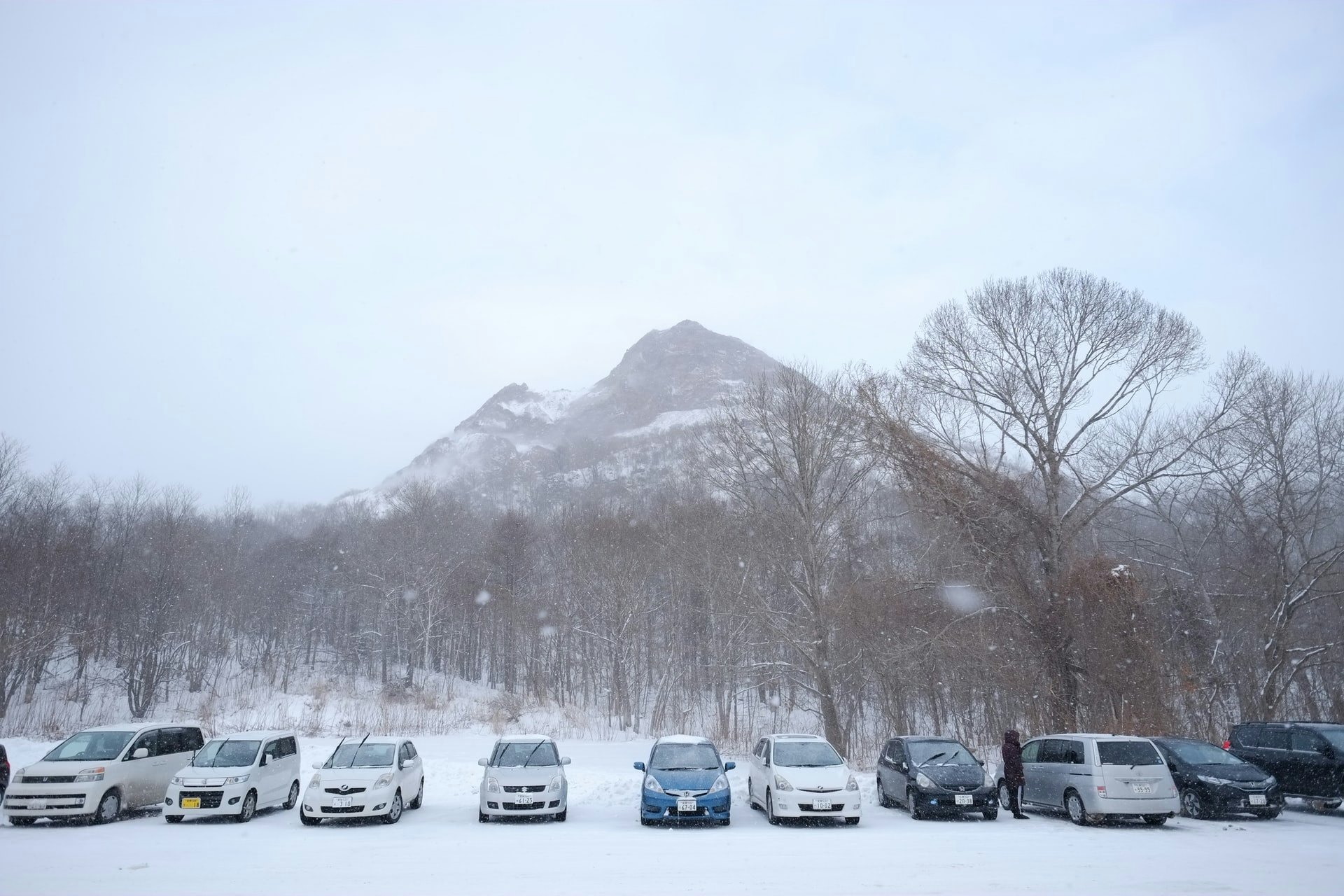
- 296.5 acres
- 22 trails
- 10 lifts
- 2,001 feet of vertical drop
- 69 feet of snow per year
- Resort Pass
What if we told you that you could have shed loads of pow to yourself with practically zero crowds? You’d doubt us, right? Well, you obviously haven’t heard about Kiroro. This place is the holy grail of skiing and snowboarding, offering tons of that high-quality Hokkaido pow. And by tons, we mean it – Kiroro ski resort receives a mind-blowing 69 feet of snow per year! Oh, and awesome tree runs and insane backcountry and sidecountry… which you don’t have to share!
And Kiroro isn’t just for freeriders. It’s actually a modern ski resort with all the trimmings, including a well-designed layout, fast-running lifts, and ski-in, ski-out accommodation. What more do you need? Oh, off-mountain activities? Kiroro delivers on that front, too. Go tubing or step into a Snow Bubble Ball (a giant inflatable ball!).
Okay, locals and staff don’t speak English that widely in Kiroro. And there’s no real village here. However, if riding is your target, Kiroro is the real deal! And there are some facilities for winding down after a hard day’s skiing or snowboarding. Take your pick with the swimming pool, onsens, ice rink…or karaoke!
Top tip: When snow goddess Puki Yuki has done her thing, head for the Nagamine lifts for quicker access to those freshies than the gondola can deliver. Once you’ve had your fill of the good stuff, stop by Asari View Food Court for a hearty breakfast and coffee to set you up for the second round.
Myoko Kogen, Niigata
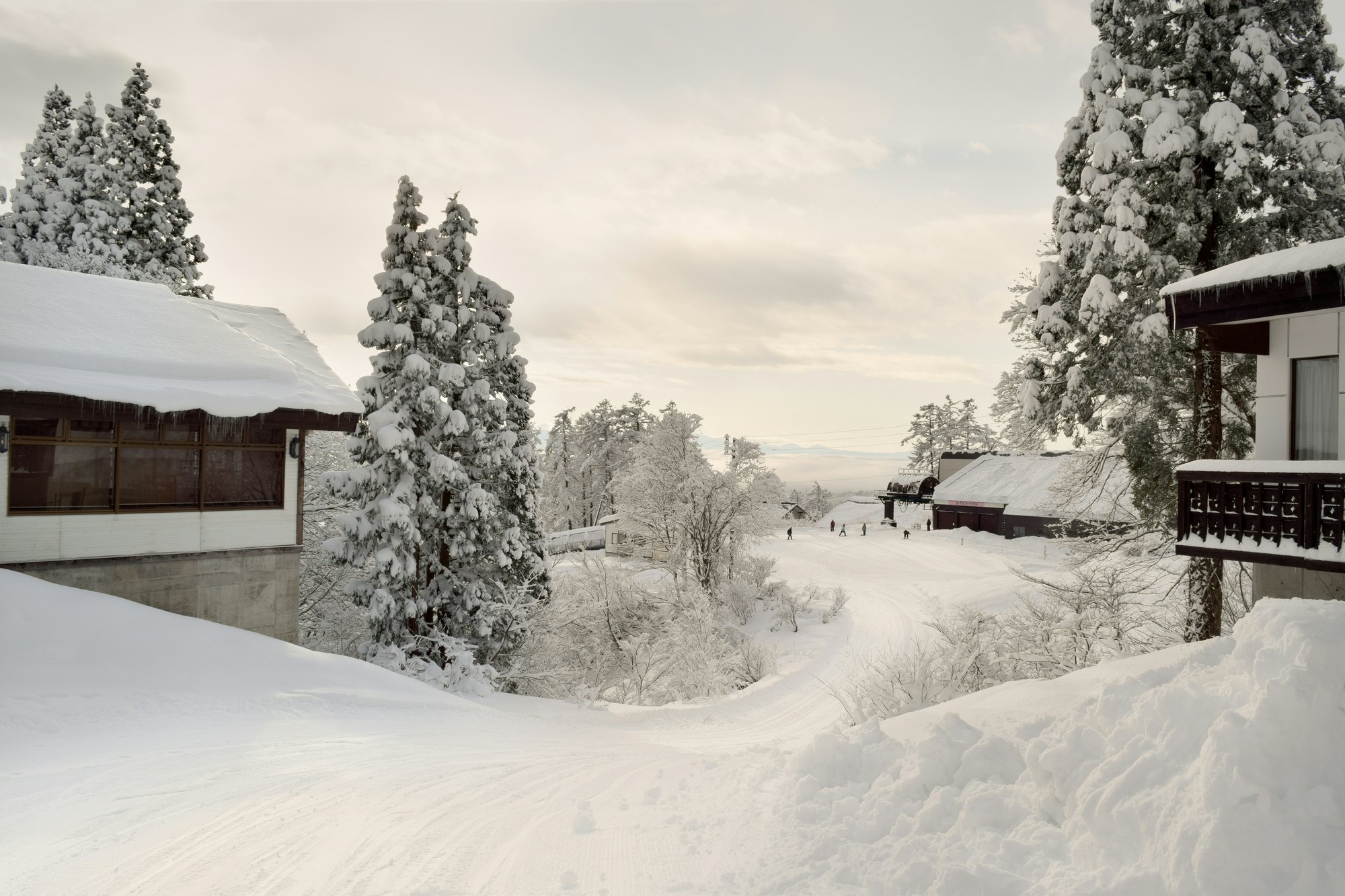
- 3,910 acres
- 50+ trails
- 40 lifts
- 3,688 feet of vertical drop
- 43 feet of snow per year
- Resort Pass
If somewhere’s known for having some of the best vertical and longest runs in Japan, your curiosity piques, right? Then head for Myoko Kogen, one of Japan’s oldest ski areas with 3,688 feet or 1,124 meters of vertical drop and long runs (some are a crazy three miles long!). Oh, and the pow is spectacular, too, with Myoko Kogen reaping around 43 feet or 13 meters of the good stuff annually! That means off-piste and tree riding are particularly epic here!
Whether you’re clipping into skis for the first time, experiencing your 1,000th backcountry pow shot, or, as we mentioned, craving some serious vertical, you’ll find it all and more in Myoko Kogen’s main areas. Discover Myoko Akakura (with beginner-perfect Akakura Onsen and Akakura Kanko ski resorts), Myoko Suginohara (full of cruisey groomers and epic side and backcountry), Seki Onsen (epic tree lines abound), and Ikenotaira Onsen (awesome for learning how to ride off-piste).
More into self-care than shredding? Wind down by warming up at one of Myoko’s seven natural onsens. Or venture into the slice of nightlife, such as Grape and Grain at Hotel Taiko for a chilled après-ski. Want things more vibrant? Head to the Skate Bar, which is open till late and features its own skate ramp. Feeling peckish? Aim for Harumi in Akakura Onsen for scrummy small bites, including yakitori. Myoko is an awesome pick for mixing Japow with Japanese culture. It isn’t overly Westernized; Japanese locals own and run businesses. However, English is still widely spoken, with most izakayas (Japanese pubs) and restaurants providing English menus. Plus, Akakura offers English-speaking ski school and daycare. Handy!
Top tip: Craving even more pow? Get road-tripping by visiting nearby ski resorts, such as Madarao, Tangram, or Lotte Arai – all of which receive tons of Japow every season. Oh, and speaking of road trips, we definitely recommend hiring a car to experience Myoko. It’s way easier than relying on the bus system, which is often temperamental, expensive, and jam-packed with riders.
Appi Kogen, Iwate
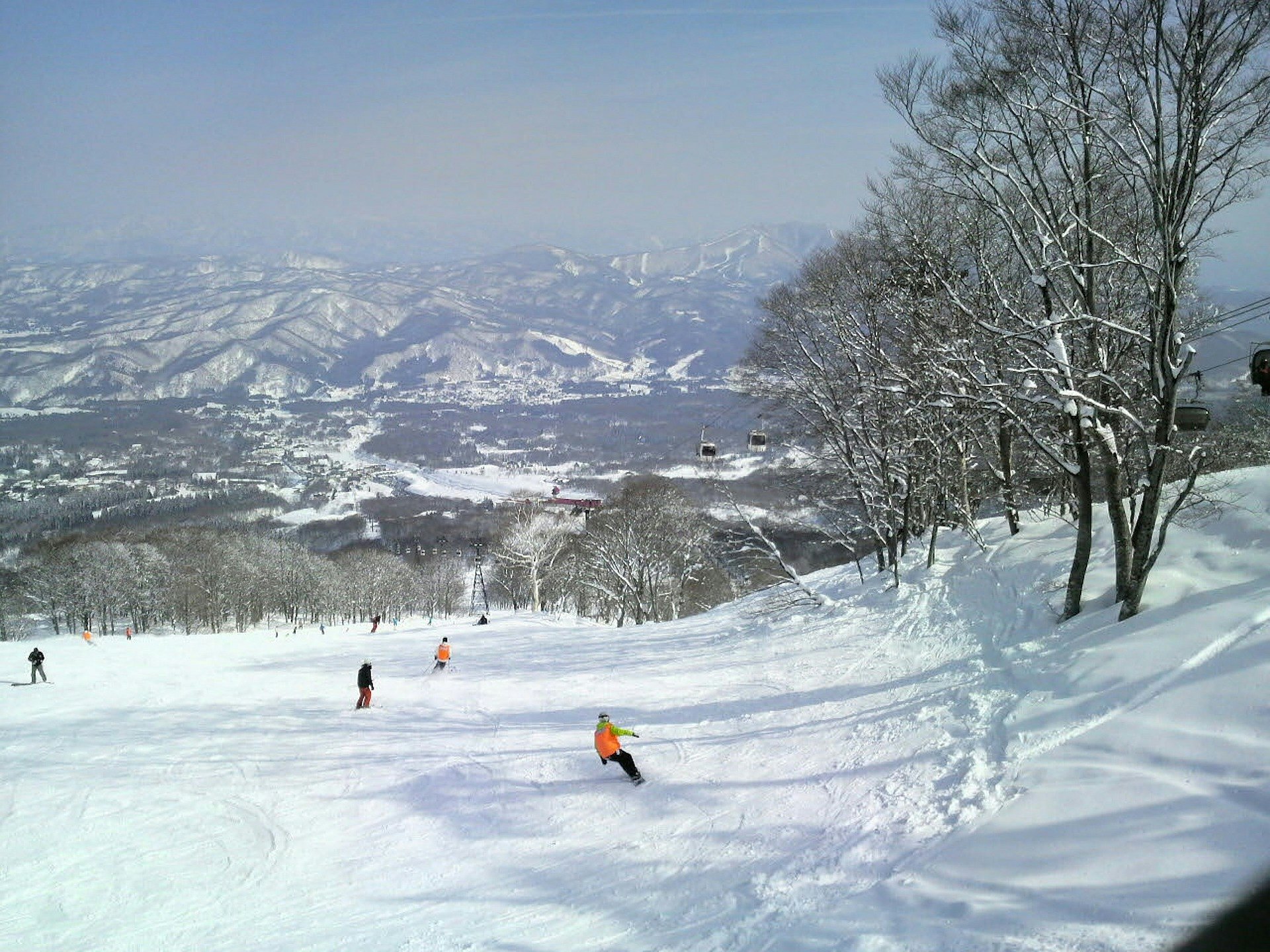
- 700 acres
- 21 trails
- 16 lifts
- 2,716.5 feet of vertical drop
- 26 feet of snow per year
- Resort Pass
Appi Kogen is still relatively under the radar compared to the heavy hitters. So, you’ll meet a lot more locals throughout its 21 trails and base area. Don’t worry – it’s English-friendly, and the riding is legendary. We really urge you to visit before someone spills the beans and Appi Kogen becomes awash with visiting riders.
For now, you’ll have the chance to lay tons of fresh tracks – especially as backcountry riding is allowed here. Plus, you can secure sidecountry lines in five tree skiing areas. Our favorite tree zone is Bravo, where you can float through Abies mariesii and birch trees in pow rarely affected by wind or too much sun. In fact, Appi prides itself on its ‘Aspirin Powder’: dry, chalky pow that’s special to the area – and impossible to create snowballs with. If groomers are more your thing, you’re in luck – Appi Kogen is also renowned for its meticulous grooming and fun, lengthy runs (over a mile long!). Desperate for some air? You’ll find a terrain park, too. And kids? They can shred for free if they’re 12 or under!
Bear in mind that Appi Kogen is a purpose-built ski resort. So, you’ll find a compact base area instead of a major village or town. However, you’ll have plenty of ski-in, ski-out hotels to choose from, including the ANA Crowne Plaza Resort (its gold tower is hard to miss!), the ANA Intercontinental Resort Appi Kogen, and the Holiday Inn Resort. Yep, Appi has everything you could need from a Japanese ski resort. In fact, it’s hard to be anything other than what its tagline encourages: ‘Be Happy in Appi’.
Top tip: Get your hands on a limited edition Black Pass. This lets you use the snowcat service – that recently replaced the top lift – on weekends and holidays. So, you can access that prime sidecountry and have an hour of first tracks off the gondola before anyone else. Beware, though – a Black Pass is steep in price (around $230 per pass!). So, maybe aim to earn your turns if you’re desperate to lay first tracks.
Wrapping up
Woah, what a place! Whether you’re laser-focused on powder pursuits, soaking in hot springs, refueling on ramen, or all three, Japan is the place to be. Just make sure you pack your snorkel – we’re still wrapping our minds around the crazy amounts of Japow it reaps every winter!
Shouting at your screen because we’ve missed an epic spot or forgot to mention something crucial for a good time? Get in touch with us at crew@dopesnow.com, and we’ll update this ASAP. Want others to see you slashing Japow? Post your pics and vids on the Dope Snow Community Facebook Group. Sayonara – and see you out there!
Related reading:
